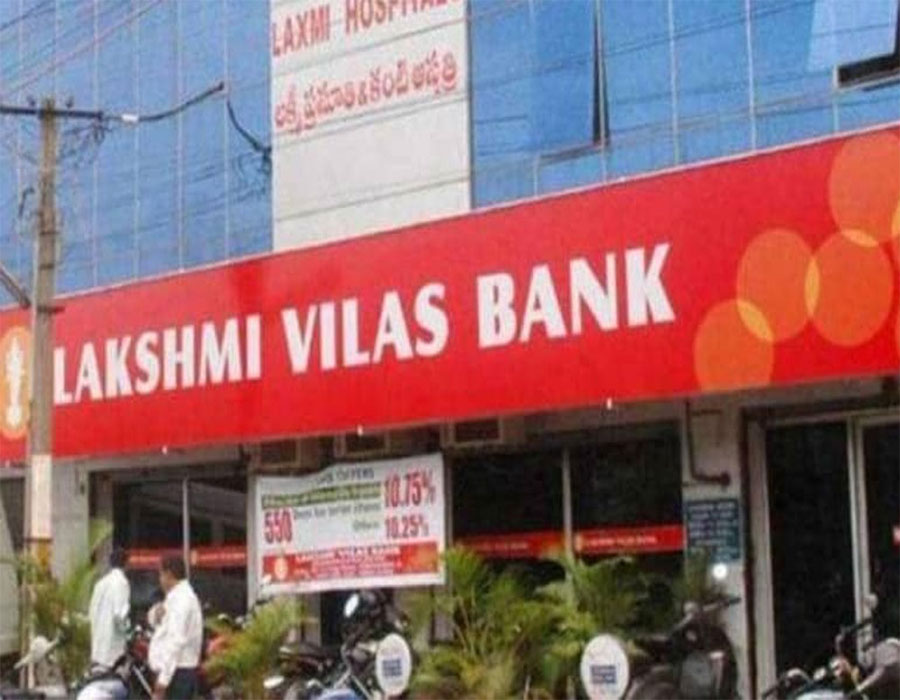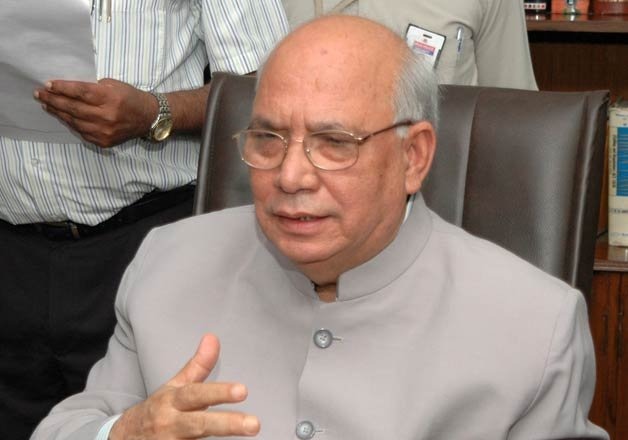Before giving banking licence to corporates, the RBI must ensure a robust and fool-proof regulatory oversight architecture which it clearly lacks now
The nationalisation of banks in 1969 effectively ended the corporate dominance in the banking industry, with the Government taking control of 90 per cent of the total banking business in India. Now corporate houses may once again be allowed to enter the banking arena if the recommendations of the Reserve Bank of India’s Internal Working Group (IWG) for reviewing corporate structure of private sector banks are accepted by the Government. The suggestions are rather sweeping and it is questionable if all the risks have been weighed carefully. There are two major recommendations; the first is to allow large corporate and industrial houses to own banks by amending the Banking Regulation Act 1949, and the second is to allow large non-banking financial companies (NBFCs) with 10 years’ track record, including those owned by corporate houses and with an asset size of Rs 50,000 crore and above, to convert themselves into banks. The recommendations are open for comments till January 15, 2021.
Some of the biggest industrial houses already own large NBFCs bigger than many medium-sized banks with more than a decade’s track record. Besides HDFC with assets worth Rs 5.6 lakh crore, there are Bajaj Finservice, Sriram Transport, L&T Finance Holdings, Indiabulls Housing, Tata Capital, M&M Finance holdings, Cholamandalam Investment and Finance Company, Muthoot Finance and Aditya Birla, which fulfil the twin criteria. Their total assets would exceed Rs 14 lakh crore (FY 20). There are also Government-controlled NBFCs – for example, the one led by PFC with assets of Rs 6.6 lakh crore, followed by REC with Rs 3.2 lakh crore assets, LIC Housing Finance and HUDCO – which also fulfil the criteria; their total assets amount to around Rs 14 lakh crore. For a Covid-battered and capital-starved banking sector reeling under mounting NPAs, such huge capital from private cash-rich companies could just be rejuvenating, a consideration which probably weighed with the IWG. Private players were allowed into banking after 1993 and since 2016, NBFCs have also been allowed, but so far their responses have been tepid. One reason was the small cap of 15 per cent on the promoter’s stake; this is now proposed to be raised to 26 per cent in the long run over 15 years. But as Rajnish Kumar, the former chairman of SBI, said: “It will only work well when the system has three things in place — strong ring-fencing for business interest, high-quality corporate governance and resolution framework for banks and finance companies.” This is where the recommendations raise serious worries and have attracted widespread criticism, including from ex-Central bankers Raghuram Rajan and Viral Acharya, who called it a “bombshell” dropped by the RBI.
Historically, the RBI has always been cautious about issuing banking licences to corporates on account of the inherent conflicts of interest and poor corporate governance. The last two licences to IDFC First Bank and Bandhan Bank were given seven years ago after licences given to the Kotak Mahindra Bank and YES Bank, of which the YES Bank has now gone bust due to crony capitalism and ineffective regulatory controls and had to be bailed out like all others.
The global financial crisis had made the developed nations very cautious. In response to the 2008 global financial crisis, the US had adopted several measures, including enactment of the Dodd-Frank Wall Street Reform and Consumer Protection Act, which introduced a raft of measures to regulate the financial sector and protect consumers. The Act amended many existing legislations, like the Securities Exchange Act of 1934 to create an Investor Advisory Committee, an Office of the Investor Advocate and an ombudsman. It instituted regular reviews of conflicts of interest within investment firms by newly-created oversight institutions like the Financial Stability Oversight Council for identifying and improving systemic risks and especially to monitor designated Systemically Important Financial Institutions, which are deemed “too big to fail.” Even these may not be sufficient guarantee against future malfeasance.
Nothing of that sort happened in India. Satyam happened in 2009 and we were in deep slumber. An attempt to strengthen corporate governance and give it a statutory authority was made only in 2013 in the new Companies Act by incorporating some key provisions of Clause 49 of SEBI’s listing agreement. That these are hardly effective is evidenced by the unending series of frauds and scams, which have since broken upon the Indian banking scene, the regularity of which no longer surprises us. The weaknesses of the regulatory and oversight institutions and the multiple conflicts of interest along with crony capitalism have wrought havoc in the financial sector time and again. The IL&FS fraud dealt a body blow to NBFCs in India, exposing the risks a large NBFC poses to our financial system. Much of our NPAs have been the creation of super-fraudsters like Vijay Mallya, Nirav Modi, Mehul Choksi, Rana Kapoor and their ilk who could manipulate the system with active support from important levers of power. In all these cases, the RBI’s supervision has been lax and ineffective. Of course, the RBI was not alone to blame; the statutory auditors, often from the big four, and the credit rating agencies equally contributed to bypassing controls, throwing caution to the winds.
If the growth of banks and NBFCs continues unchecked without an effective framework to correct asset-liability mismatches, the financial sector will remain vulnerable to risks and accidents, dragging the economy in a downward spiral. The continued failure of banks – the latest being the Laxmi Vilas Bank (LVB) – point to the gross inadequacy of the RBI’s regulatory architecture, including its prudential norms. Even in the developed world, entry of large corporates into the banking sector is discouraged. The IWG has itself admitted that “the prevailing corporate governance culture in corporate houses is not up to the international standard and it will be difficult to ring-fence the non-financial activities of the promoters with that of the bank”; all the experts it had consulted, save one, on this issue had disagreed with its recommendations.
Before allowing large NBFCs into the banking space, the RBI must ensure a robust and fool-proof regulatory oversight architecture which it clearly lacks. The urgency being displayed by it to complete this process, therefore, legitimately surprises many and raises many unnerving worries.
The biggest concern of the RBI has always been to prevent connected lending and exposure between the banks and other related financial and non-financial group entities. It allowed large industrial houses to set up their own payments banks for the first time during 2015-16. Many like the Tatas, Birlas, Ambanis and Mahindras had applied for licence. Of the 41 applications, only 11 got in-principle approval, and seven started operations by 2018. But the banking landscape in India is undergoing significant transformation, with all public sector banks to be consolidated into only half a dozen large banks with balance sheet size of Rs 10 lakh crore each, besides a handful of large private banks. Hence there may be better avenues for raising capital rather than putting the stability of the financial system at stake.
Indeed the stakes are too high to treat the matter so casually. First is the enormous risk in connected lending. As Rajan and Acharya have correctly noted, “The history of such connected lending is invariably disastrous – how can the bank make good loans when it is owned by the borrower? Even an independent committed regulator, with all the information in the world, finds it difficult to be in every nook and corner of the financial system to stop poor lending.” Besides, the unintended consequence of concentration of economic and hence political and lobbying power in such corporate houses is likely to follow, giving a further boost to crony capitalism. Second is the excessive competition likely to result from the entry of corporates into banking, leading to erosion of profit margin of the existing banks and forcing them to lend to risky ventures and businesses, thereby further weakening the financial system. Ultimately, it is only the small investors who pay the price, as we have seen in the cases of Sahara, DHFL, PMC Bank, Yes Bank and LVB. Corporate governance is weak even in the largest private banks, as the case of ICICI Bank has demonstrated.
The Indian financial landscape is littered with a highly complex web of numerous shell companies, front companies to big corporates they can lend to, opaque onshore and offshore ownership structures of companies and incestuous financial transactions between corporate entities, who can easily form a cartel to evade regulation and oversight. The RBI still does not have the institutional capacity to enforce regulation and exercise effective control – only recently it has introduced a separate regulatory and supervisory cadre to monitor systemic risks arising from the growing sizes and complexities of an intertwined and interconnected financial sector. The question to be addressed before embarking upon any such misadventure is whether the regulator is adequately equipped to monitor millions of transactions taking place via the internet, traversing every nook and corner of the globe, and follow the monetary trails of illegitimate deals.
(The author is a former Director-General at the Office of the Comptroller & Auditor General of India and an academic)








 OpinionExpress.In
OpinionExpress.In















Comments (0)